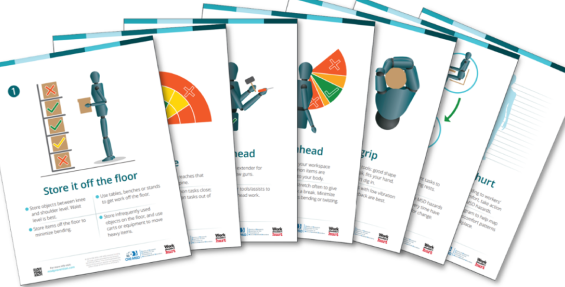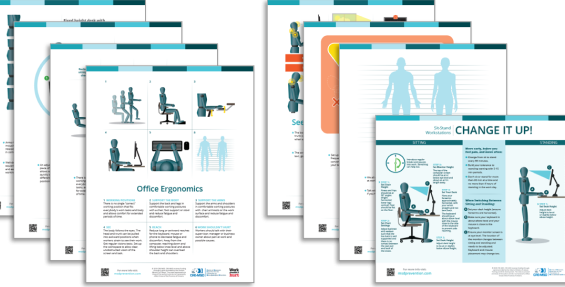What does "Work Shouldn't Hurt" really mean?
Many jobs require physical effort. Sometimes these physical efforts may cause some discomfort, muscle soreness, or muscle tiredness, just like going to the gym or other physical activity. Typically, this occurs when starting a new job, a new task, or with a sudden increase in workload. This does not mean that you are hurt. Just like other physical activity, the feelings of discomfort should go away within a day or two as your body adapts.
“Hurt” refers to injury or musculoskeletal disorders (MSD) associated with work. Red flags that separate “hurt” from the normal discomfort and muscle tiredness that we feel when doing physical labour are:
- Pain that persists longer than three days
- The need to regularly take over-the-counter medications (e.g. Advil, Tylenol, or Aspirin), use other drugs, or prescription pain killers (e.g. opioids) to continue working.
- Not being able to perform work tasks or leisure activities outside of work.
- Sharp pain
- Pain that wakes you up during the night
- Inability to use the part of the body that hurts
It’s important to talk to your supervisor, manager, or business owner about your pain at work and possible causes.
Work Shouldn’t Hurt applies primarily to preventing injuries before they occur. Previous injuries can alter individual’s relationship with pain and may require additional support from qualified professionals, especially during the return-to-work process.
Other resources on this topic:
- Position paper: Chronic pain is a different kind of injury
- Institute for work and health – Hurt versus Harm in return to work

MSD Hazards in the Workplace
Well designed work considers how job demands might impact workers’ health and safety. Safe and healthy work allows workers to interact with their work environment without harm.
There is strong evidence that physical factors in the workplace greatly increase a person’s chance of developing an MSD and make worse an existing MSD on return to work. Awareness of common MSD hazards can help workers identify workplace factors that can contribute to MSD and notify their supervisor or manager. When initial signs of discomfort or pain go unaddressed, this can lead to the development of MSD and may impact the ability to perform and enjoy tasks or leisure activities outside of work.
Fortunately, most workplace hazards that give rise to MSDs can be identified and eliminated with an effective MSD prevention program in place.

Rights and Responsibilities
In Ontario, the Occupational Health and Safety Act (OHSA) gives workers the right to:
- Know information and knowledge of hazards,
- Participate, and
- Refuse unsafe work that they believe is dangerous to either their own health and safety or that of another worker.
In Ontario, “Worker responsibilities include:
- reporting hazards in the workplace,
- working safely and following safe work practices,
- using the required personal protective equipment for the job at hand, and
- participating in health and safety programs established for the workplace.”
Relevant Guideline Information
The Quick Start Guide posters describe common MSD hazards foudn in the workplace. There are two different versions; General and Office. The General Guideline is intended for any type of workplace, and the Office Guideline is intended for computer-based work.

Quick Start Guide: General
The guide includes a folder and posters with information on common MSD hazards and solutions to control hazards in many workplaces.

Quick Start Guide: Office
The guide includes a folder and posters that include tips for setting up computer-based workstations and best practices for MSD prevention.
Relevant Resources
Additional Resources for Workers
View a curated collection of resources in the resource library.

Want to search the resource library?
Find all the available resources on the MSD prevention website, including posters, videos, and links to relevant websites.


